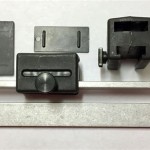Convex Mirrors Produce Only Virtual Images
Convex mirrors, also known as diverging mirrors, are spherical mirrors characterized by their reflective surface bulging outwards. This unique geometry dictates the manner in which light rays interact with the mirror, leading to the formation of images with specific characteristics. Unlike concave mirrors, which can form both real and virtual images depending on the object's position, convex mirrors exclusively produce virtual images. This characteristic is fundamental to understanding the practical applications and limitations of these mirrors in various optical systems.
The formation of an image, whether real or virtual, is based on the principle of reflection. When light rays from an object strike a mirror, they are reflected according to the law of reflection: the angle of incidence equals the angle of reflection. In the case of a convex mirror, the outward curvature causes the reflected rays to diverge. This divergence is the key reason why convex mirrors cannot produce real images.
To understand why only virtual images are formed, it is crucial to differentiate between real and virtual images. A real image is formed when reflected light rays actually converge at a point in space. This convergence allows the image to be projected onto a screen or captured by a sensor. Conversely, a virtual image is formed when reflected light rays appear to diverge from a point behind the mirror. These rays do not actually converge, meaning the image cannot be projected onto a screen. The brain perceives the virtual image as originating from this point behind the mirror.
The properties of the virtual images formed by convex mirrors are consistent and predictable. They are always upright (erect), smaller than the object (diminished), and located behind the mirror. These properties are directly related to the diverging nature of the reflected light rays. The extent to which the image is diminished depends on the curvature of the mirror, a parameter quantified by the focal length.
Understanding the Divergence of Reflected Rays
The geometry of a convex mirror dictates the diverging nature of the reflected rays. Consider a set of parallel light rays incident on the convex surface. After reflection, these rays will spread outwards, appearing to originate from a point behind the mirror. This point is known as the focal point (F) of the convex mirror. The distance between the mirror's surface and the focal point is called the focal length (f). By convention, the focal length of a convex mirror is considered negative.
The divergence of reflected rays can be further understood by considering the normal to the mirror's surface at the point of incidence. The normal is a line perpendicular to the tangent of the mirror's surface at that point. According to the law of reflection, the angle of incidence and the angle of reflection are measured with respect to this normal. Due to the outward curvature, the normals at different points on the convex mirror's surface are oriented differently. This variation in normal orientations causes the reflected rays to diverge away from each other.
Ray diagrams are a valuable tool for visualizing the image formation process in convex mirrors. Typically, two principal rays are used to locate the image. The first ray is drawn parallel to the principal axis (the line passing through the center of curvature and the vertex of the mirror). After reflection, this ray appears to come from the focal point. The second ray is drawn as if it is traveling towards the center of curvature (C) of the mirror. This ray reflects back along the same path. The intersection of the extensions of these reflected rays behind the mirror defines the location of the virtual image.
The image formed by a convex mirror is always virtual because the actual reflected rays do not intersect. Instead, it is the extensions of the reflected rays that intersect behind the mirror. This is a direct consequence of the diverging nature of the reflection. No matter where the object is positioned in front of the convex mirror, the reflected rays will always diverge, resulting in a virtual image.
Mathematical Description of Image Formation
The relationship between the object distance (u), the image distance (v), and the focal length (f) of a spherical mirror is described by the mirror equation: 1/f = 1/u + 1/v. For convex mirrors, the focal length (f) is taken to be negative. Since convex mirrors produce only virtual images, the image distance (v) is also negative. The negative sign indicates that the image is located behind the mirror.
The magnification (m) of a spherical mirror is defined as the ratio of the image height (hi) to the object height (ho): m = hi/ho = -v/u. For convex mirrors, the magnification is always positive and less than 1. The positive sign indicates that the image is upright, and the value less than 1 indicates that the image is diminished.
Consider an example: An object is placed 30 cm in front of a convex mirror with a focal length of -15 cm. Using the mirror equation, we can calculate the image distance: 1/-15 = 1/30 + 1/v. Solving for v, we find v = -10 cm. The negative sign confirms that the image is virtual and located 10 cm behind the mirror. The magnification is m = -(-10)/30 = 1/3. This indicates that the image is upright and one-third the size of the object.
The consistent application of the sign conventions for object distance, image distance, and focal length is crucial for accurate calculations involving convex mirrors. Specifically, the negative focal length and negative image distance are essential for reflecting the diverging nature of the mirror and the virtual nature of the image.
Applications of Convex Mirrors
The properties of convex mirrors – their ability to provide a wide field of view, coupled with the formation of upright, diminished, virtual images – make them suitable for a variety of applications. While they don't project real images, their wide-angle view is highly valued in specific scenarios.
One common application is in rearview mirrors in vehicles. The convex shape allows drivers to see a larger area behind the car than would be possible with a flat mirror. This wider field of view significantly enhances safety by reducing blind spots. However, the driver must be aware that distances appear smaller than they actually are due to the diminished image size.
Convex mirrors are also used in security systems in stores and warehouses. These mirrors provide a wide view of the aisles, allowing security personnel to monitor a larger area. They can also be found in ATMs and in computer monitors to observe people standing behind the user. This helps to deter theft and ensure the safety of transactions.
Another application of convex mirrors is in street lighting. By strategically positioning convex mirrors, light from a single source can be dispersed over a wider area, improving visibility and safety. The diverging nature of the reflected light helps to eliminate dark spots and create more uniform illumination. Furthermore, convex mirrors are utilized in some optical instruments, although their primary function is often to widen the field of view rather than to form magnified images.
The choice of using a convex mirror in any application involves a trade-off. While the wide field of view is advantageous, the diminished image size may require the user to focus more intently on details. The virtual nature of the image also means that the image cannot be projected onto a screen, limiting its use in certain optical systems that require real image formation.
In summary, convex mirrors are characterized by their outward curvature, which leads to the divergence of reflected light rays. This divergence is the fundamental reason why convex mirrors can only produce virtual images. These virtual images are always upright, diminished, and located behind the mirror. The properties of convex mirrors make them valuable in applications requiring a wide field of view, such as rearview mirrors, security systems, and street lighting.
Can A Convex Mirror Produce Real Image When The Object Is Virtual And Vice Versa Concave If Yes How Will It Be Possible Why Quora
Can A Convex Mirror Form Magnified Image Quora

Convex Mirror Image Formation Conditions Ray Diagram Uses

Question Recalling Whether The Image Produced By A Convex Mirror Can Be Inverted Nagwa
Solved Convex Mirror Produce A Only Virtual Images B Chegg Com
Is It Possible For A Convex Mirror To Produce Real Image When The Object Virtual Quora
Does The Convex Mirror Never Produce Real Images That Meet At Any Point Because Of Reflected Rays Quora

Convex Mirror Image Formation Conditions Ray Diagram Uses

Real Image Wikipedia
Is It Possible For A Convex Mirror To Produce Real Image When The Object Virtual Quora








